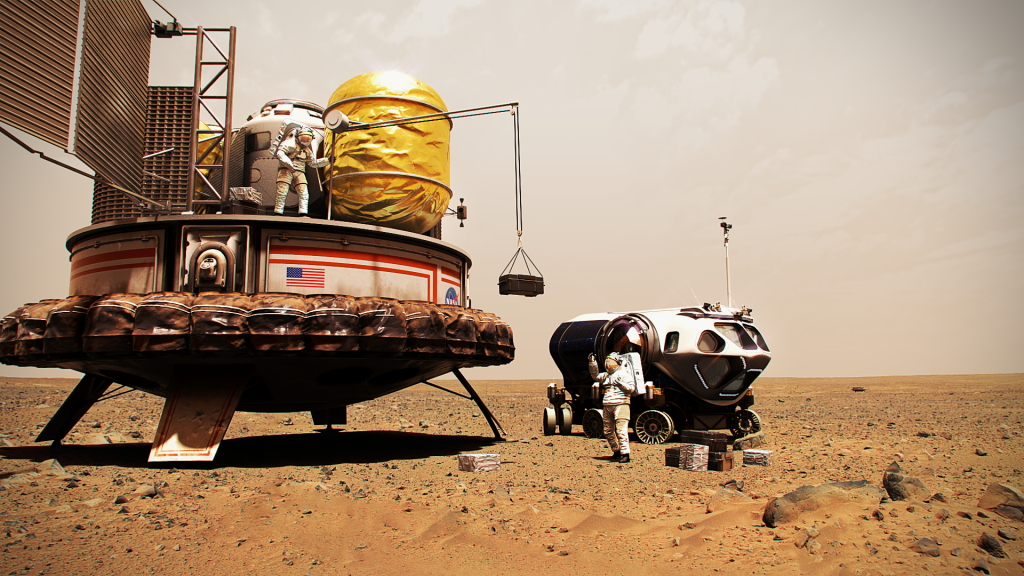The Future of Space Exploration: Are We Ready for Mars?.

Are we truly ready to send humans to Mars? Explore the future of space exploration, the challenges of reaching the Red Planet, NASA and SpaceX missions, and what it means for humanity.
The Next Giant Leap.
For decades, Mars has captured the imagination of scientists, astronauts, and dreamers. It represents the next frontier in human exploration—a bold step beyond the Moon. As technological advancements accelerate, sending humans to Mars is no longer a matter of “if,” but “when.”
But are we truly ready for such an ambitious journey?.
This article explores the current state of space exploration, the logistical and human challenges of a Mars mission, the key players involved, and what a successful Mars landing could mean for the future of humanity.
Why Mars?
Mars is the most Earth-like planet in our solar system. With its 24.6-hour days, polar ice caps, and the presence of water in the form of ice, it offers the most realistic possibility of supporting human life.
Key Reasons to Explore Mars:
- Search for Life: Did Mars once harbor microbial life?
- Understanding Planetary Evolution: Studying Mars helps us understand Earth's history and future.
- Survival of Humanity: Establishing a second home could ensure human survival in case of catastrophe on Earth.
- Technological Advancement: Mars exploration drives innovation in robotics, AI, propulsion, and sustainability.
The Road So Far: Mars Missions and Milestones
Humans haven't stepped on Mars yet—but robots have been paving the way.
Key Missions:
- Viking 1 and 2 (1976): First successful U.S. landers on Mars.
- Curiosity Rover (2012): Explored Martian terrain and geology.
- Perseverance Rover (2021): Collecting rock samples for future return missions.
- Ingenuity Helicopter: First powered flight on another planet.
- Mars Orbiter Missions: From NASA, ESA, and India’s ISRO—helping map and study the planet.
Are We Ready to Send Humans to Mars?.
Sending humans to Mars is far more complex than launching satellites or rovers.

1. Distance and Travel Time
- Mars is 34–250 million miles away, depending on its position.
- One-way trips would take about 6 to 9 months, requiring long-term life support systems.
2. Radiation Exposure
- Unlike Earth, Mars lacks a magnetic field and thick atmosphere, exposing travelers to harmful cosmic rays.
- Solutions include shielding habitats or underground shelters.
3. Psychological and Physical Effects
- Isolation, zero gravity, and confinement for over a year can severely impact mental and physical health.
- Research on the International Space Station (ISS) helps prepare astronauts for these challenges.
4. Landing and Living on Mars
- Entry, descent, and landing (EDL) on Mars is risky due to thin atmosphere and dust storms.
- Habitats must be self-sufficient, producing oxygen, food, and water from local resources.
5. Return to Earth
- Launching from Mars requires fuel and infrastructure—raising major engineering hurdles.
Key Players: NASA, SpaceX, and Beyond.
NASA’s Artemis and Moon to Mars Program
NASA is using the Artemis missions to return humans to the Moon and prepare for Mars:
- Testing lunar habitats and surface mobility.
- Building the Lunar Gateway as a staging post.
SpaceX and Starship
Elon Musk’s SpaceX is leading private efforts to make Mars colonization possible:
- Starship is a fully reusable rocket designed for interplanetary travel.
- BMusk envisions a self-sustaining city on Mars by the 2050s.
Other Players:
- Blue Origin: Focused on lunar exploration, but with eyes on Mars.
- China and Russia: Developing Mars mission concepts.
- European Space Agency (ESA): Collaborating with NASA on rover and sample return missions.
Terraforming and Colonization: Science or Sci-Fi?.
Long-term habitation on Mars may require terraforming—altering the planet's environment to make it more Earth-like.

Proposed Ideas:
- Releasing greenhouse gases to warm the planet.
- Using nuclear reactors to melt polar ice.
- Building dome cities with Earth-like conditions inside.
But all of this remains speculative. Current technology is not yet capable of large-scale terraforming.
Ethical and Environmental Considerations.
1. Planetary Protection
Introducing Earth microbes could contaminate potential Martian ecosystems. Protecting native environments is a top priority.
2. Human Rights in Space
Who owns Mars? What legal systems will apply? The 1967 Outer Space Treaty forbids national claims, but legal gray areas remain.
3. Resource Exploitation
Mars may contain rare minerals. Ethical debates arise about extraction and ownership.
The Timeline: When Will We Land on Mars?.
NASA's Goals:
- Crewed Mars mission in the late 2030s or early 2040s.
SpaceX’s Ambitions:
- Elon Musk hopes for uncrewed missions in the late 2020s.
- Potential crewed missions by early to mid-2030s.
Realistically:
Most experts agree that a human landing on Mars by 2040 is plausible—if current investments and political support continue.
The Final Frontier Awaits
The future of space exploration is closer than ever—and Mars is the centerpiece. While challenges are vast, the scientific, cultural, and existential rewards could be even greater.
Mars represents more than just a planet; it symbolizes humanity’s ability to dream beyond our limits and reach for the stars. As we stand on the brink of this new frontier, the question isn’t just “Are we ready for Mars?”—it’s “Can we afford not to go?”




